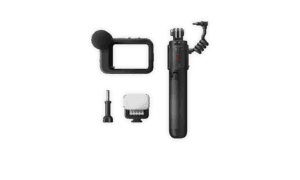No matter when you started your tech business, improving its productivity is probably an ongoing goal. Raising the overall output can help you keep clients happy and meet emerging needs. Reaching an optimal productivity level is not always straightforward, but these solutions will help.
Ensure Workers Have the Necessary Training and Tools
Many employees struggle to stay productive because their company does not provide them with the tools and education they need to succeed. For example, you shouldn’t expect your sales team to learn a new sales-tracking tool’s ins and outs without guidance. Similarly, hosting a workshop on time management could give your team new tips for getting more done.
Talk to your employees and ask them to list the top things that prevent them from getting as much done as they could during a typical workday. Then, analyze their responses to see if you spot any patterns. What resources could you provide them with to address the issues they mentioned? Do you see gaps in their knowledge that an educational program could address?
Getting feedback from your workforce is also an excellent morale booster. It’ll mean a lot to them that you ask about what they lack, rather than making assumptions.
See the Link Between Improved Productivity and Better Customer Service
One of the benefits of improving your tech company’s productivity is that your team should be better able to tackle customer issues before they damage your company’s reputation. Many brand representatives used to be reactive in customer service. They let communications from unhappy customers inform which changes to make and when.
Since businesses typically collect digital information about customers and their associated transactions, it’s easier to respond proactively instead. For example, you could review common customer complaints and figure out where the issues exist. Then, get in touch with the affected people and learn more about what you could do to make things right.
Boosting your company’s productivity should open up more time for your team to enhance customer experience before people get upset. Consider adopting a unified process for collecting feedback from customers. You could send them online forms after their contact with the company or have team members ask specific questions during phone calls to get at the heart of how they feel.
Connect With Your Employees to Motivate Them
Less-than-ideal levels of productivity at your tech company could occur because of widespread employee disengagement. A disengaged worker is not necessarily someone who hates their job. Perhaps they get bored quickly due to a heavy workload of monotonous tasks. Maybe they have trouble understanding how their work ties to your company’s overall goals.
Scheduling brief check-in periods is an excellent way to see how your employees are doing and screen for signs of decreased motivation. Even a 10-15-minute chat every three months could make a notable difference. That way, employees know you care about them and are committed to their growth.
Talking with your employees may also reveal that work is not the cause of their disengagement. Maybe they’re caring for a parent with dementia and get preoccupied about that person’s well-being while at work. Try to think of yourself as more of a coach than a boss during these sessions. It’ll then be easier to build rapport with your workers, increasing the chances that they’ll confide in you when things are amiss and affecting their motivation.
Address the Most Inefficient Processes
Almost all companies have some processes that take more time than they should. Working toward optimal productivity means targeting them when determining how to become more efficient. Perhaps things are slowed down by invoicing, website updates or ordering supplies. Whatever the case, scrutinize them and get to the bottom of what takes so much time.
Maybe people in different departments have to work on parts of a single process. If so, could you consolidate the work so only one person or branch of your business handles it? Alternatively, are there any unnecessary steps? Removing them could be a starting point for making things more effective and faster.
See whether automation could speed up operations, too. For example, you might determine that people are slowed down by sending incoming emails to the right places. If so, an email tool that automatically categorizes messages as they arrive could save time while reducing the likelihood of errors.
Hold Employees Accountable Through Goal-Setting and Time Estimates
Some people are not sure they are making the most of their time on the clock. That might happen if a manager unsuccessfully tries to balance supervising an employee and giving them autonomy. A worker may have the best intentions about being productive but need a bit of guidance.
In that case, holding people accountable by giving them goals to meet could be a smart move. Individuals tend to work more productively when they have clear objectives and set deadlines. They’ll also feel a sense of accomplishment when they can look at what they did at the end of a day or week and reflect on an assortment of completed tasks.
Another possibility is to provide time estimates for each task. This approach helps managers verify that employees use their workdays to tackle defined duties. It can also help a worker pace themselves. For example, a supervisor might estimate someone needs three hours to add new pages to the tech company’s website. However, if a person works on the task for 90 minutes and finds they’re behind schedule, they might assess how to pick up the pace.
Consider Outsourcing Time-Intensive Responsibilities
Some tech companies become unproductive when workers spend too much time on duties that are not central to their business. Maybe your company specializes in an artificial intelligence tool that helps human resources teams hire more-qualified people. However, you might spend more time trying to wrap your head around using payroll software than working on anything directly related to your company or its products.
In that case, you should think about outsourcing tasks that take a lot of time and are not part of your business’s core competencies. That option doesn’t immediately appeal to some entrepreneurs, and maybe you can relate. Perhaps you worry that outsourcing could cause a decrease in quality.
Tonya Thomas, the founder of a virtual assistant company, knew that hesitancy well. “At first, I felt like I was the only person who could do the work efficiently; I wanted control over everything. But I wanted my business to grow, and in order to do that, I had to let go and start delegating,” she admitted. That strategy paid off. Thomas doubled her company’s revenue during the first year she started relying on contractors to bear some of the workload.
View Productivity as a Moving Target
These tips represent some of the best practices for turning your tech company into a more productive enterprise. Even after trying them, you should always see productivity as an area for continuous improvement.
In other words, there should never come a time when you think your company is as productive as possible. As team members are hired, processes are tweaked and new products are launched, productivity will fluctuate. That’s expected and doesn’t represent failure. The important thing is to keep pursuing productivity improvements however you can and reap the rewards.
Eleanor Hecks is editor-in-chief at Designerly Magazine. She was the creative director at a digital marketing agency before becoming a full-time freelance designer. Eleanor lives in Philly with her husband and pup, Bear.


















![Port 443 vs Port 80: How Do They Differ? [A Complete Guide]](https://techbullion.com/wp-content/uploads/2025/11/unnamed-34-300x180.png)
![Port 443 vs Port 80: How Do They Differ? [A Complete Guide]](https://techbullion.com/wp-content/uploads/2025/11/unnamed-34-80x80.png)















